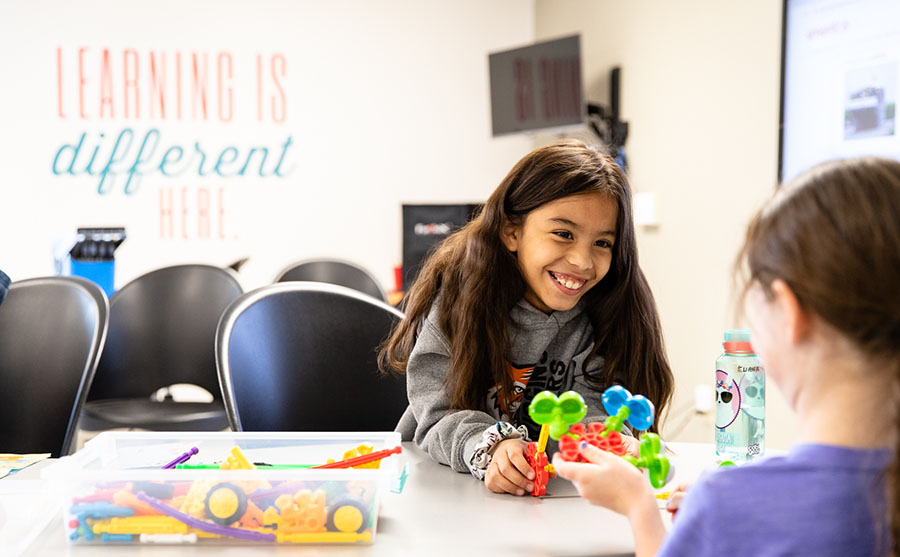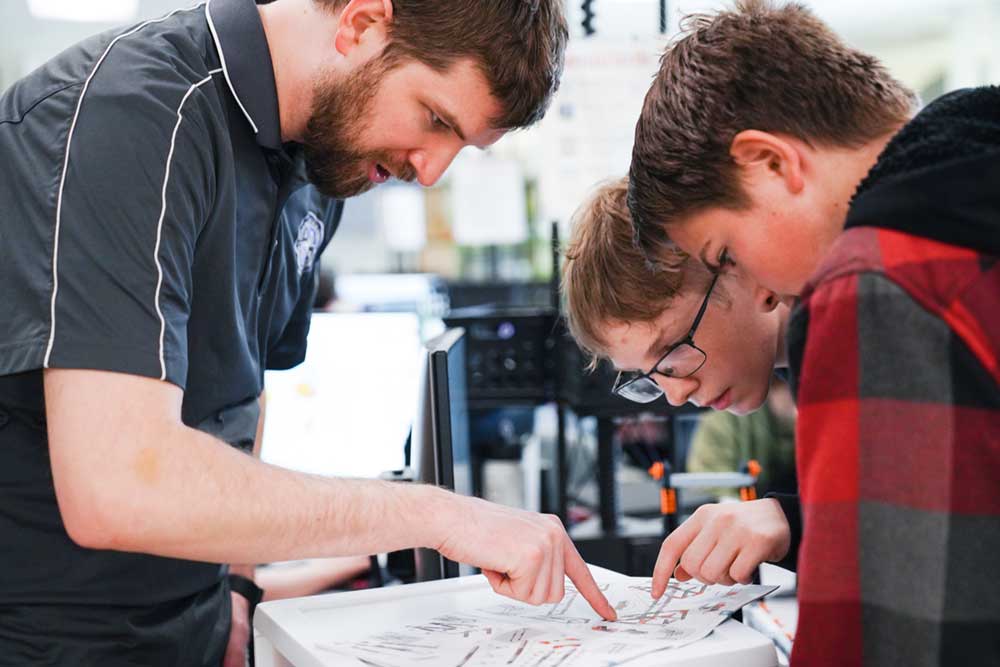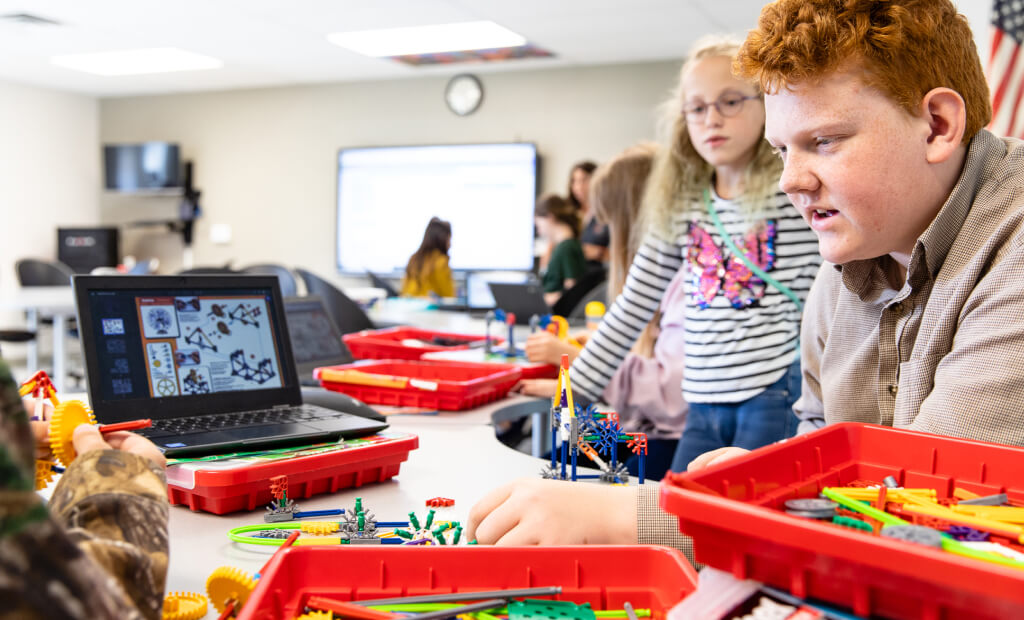How to Increase Student Engagement
Increasing student engagement is vital to creating and sustaining enthusiasm for learning in children of all ages. When young learners engage with their work, their curiosity is stimulated, and their imagination is ignited.
They’re able and willing to express their creativity while forming positive relationships with their peers, leading to a world of possibilities that will last a lifetime.
According to Phil Schlecty, a leader in overcoming the challenges of public education, when students are engaged, they exhibit three crucial qualities. Engaged students:
- Take visible delight in accomplishing their work
- Persist in their work despite obstacles and challenges
- Are attracted to their work
While it’s true that many teachers may catch glimpses of enthusiasm from engaged students, the challenge is to provide an inspirational, exciting, and rewarding learning environment that will spark the interests of young learners every day.
Motivation: The Heart of Increasing Student Engagement
Although no two students learn exactly the same way, with the right combination of engagement strategies, any classroom can become an inspirational learning environment for all students.
Extrinsic (External) Motivation
For many decades, increasing student engagement involved motivating students with extrinsic motivation, especially in the lower grade levels.
Extrinsic motivation is external to the student or the task at hand. It can include gold stars, stickers, or even grades.
Alfie Kohn, a proponent of progressive education and a lecturer in parenting, human behavior, and education, points out in his book Punished by Rewards that relying on extrinsic motivators alone fails to result in any long-lasting or deep commitment to learning.
Intrinsic (Internal) Motivation
On the other hand, intrinsic motivation comes from within. According to Kohn, intrinsic motivation is self-enhancing and more long-lasting than extrinsic motivation, making it an effective method for increasing student engagement.
However, intrinsic motivation is highly subjective; it’s a concept that exists in the context of each student and varies from learner to learner, making intrinsic motivation more challenging than extrinsic motivation.
Still, with the right student engagement strategies, students can find and curate their internal motivation, leading to a lifelong love of learning.
Strategies for Increasing Student Engagement
To get students engaged in learning and keep them engaged, they have various needs that must be met. These include:
- The need for mastery
- The need for self-expression
- The need for peer interaction
- The need for energetic accomplishment
- The need for understanding
With the right conditions at the appropriate level for each student, they can develop the motivation vital to achieving academic success. This success will also help them develop perseverance to face life challenges long after school.
Cultivating an Intrinsically Motivating Learning Environment
Before we discuss specific ideas for increasing student engagement, educators and parents must understand the goals students must reach for the door to engagement to stay open. We must consider the answers to questions such as:
- In what classroom conditions will students feel like they can be successful?
- How can we help students feel comfortable expressing themselves on a level that is satisfactory to them?
- Under what conditions are students going to feel most curious?
- How can students be motivated to learn while creating healthy relationships with their peers?
To answer these questions and learn how to increase student engagement, teachers need to discover what they are already doing correctly to cultivate motivation and then reflect on what they can do to further foster student engagement and success.
Educators must help students feel successful, spark curiosity, encourage originality, and foster peer relationships.
Convincing Students That They Can Succeed
Success is a concept that requires some form of “measurement” by which students can gauge their level of accomplishment. In other words, they need to know and understand the classroom rules they are expected to follow.
The criteria for success must be clearly articulated so that when immediate and constructive feedback is given, students will have a “target” in mind and can determine how close they’ve come to reaching it.
Another part of convincing students that they can succeed is showing them that the skills they need are within their reach. This is done by clearly modeling those skills and ensuring that the proper tools are available, whether it be a magnifying glass, art supplies, or teacher support.
Finally, educators must help young learners realize that they are already successful. We want them to understand that every student has different strengths and has already succeeded in some way.
Sparking Curiosity
Encourage students to ask questions and participate in class discussions. While this might seem a prominent part of the daily classroom routine, it may need some fine-tuning.
Instead of “encouraging” students to participate by simply asking them questions, teachers should let students know why they are being asked.
For example, instead of asking, “Why did the pilgrims come to America?” begin with, “I’m interested in your thoughts on this. Why do you think the pilgrims came to America?”
When students see someone interested in their thoughts, they feel valued, increasing student engagement. They understand and believe that they are an essential part of the discussion. When this happens, they will intrinsically need to delve further into issues and topics as their natural curiosity flourishes.
Teachers can also encourage students to ask their questions. One way to do this is by engaging in a flipped classroom where students take turns being the teacher. Another is to give students opportunities to work together on projects and brainstorm questions for other groups.
While these are just two examples of encouraging students to ask questions, it’s important to keep in mind that when children are curious, they will naturally take it upon themselves to ask questions without needing external motivators.
Encouraging Originality
Regarding extrinsic vs. intrinsic motivation, it should be noted that both are needed in the classroom. To an extent, extrinsic motivation can often lead to intrinsic motivation, especially with very young learners.
Reward students for their efforts with positive reinforcement. Celebrate their success! Gold stars do communicate to students that they have done good work. However, encouraging originality must go beyond the gold stars and the black-and-white grades that have been standard in classrooms.
The traditional ways schools have focused on creativity can often do more harm than good when it comes to encouraging self-expression. Schools design entire programs that focus on teaching techniques rather than creativity (art classes in school, for example).
In addition, students who display some degree of talent are often given more access to audiences, while the other students receive less feedback and fail to develop a sense of purpose (for example, only displaying the best pieces of artwork).
The most destructive mistake many educators make is viewing creativity as a pointless form of play, destroying the idea that creative work is meaningful.
When children create and express themselves, only to receive a poor grade for not following a specific “technique,” they learn that their ideas and unique insights are not valued. As a result, they become unmotivated, withdrawn, and disengaged.
Educators, schools, and parents must connect creative projects to the personal needs and ideas of the student. For example, instead of insisting that students create a ceramic bowl with a specific shape, size, and color, ask students to create a ceramic bowl that expresses their feelings about something personal.
Give students more choice. It is essential to help them understand how to maintain high standards and meet expectations while expressing themselves and remaining engaged.
Fostering Relationships
Get to know your students as individuals. Students want to see that they mean more to others than just what a grade or test score shows. They must realize that who they are matters. They must be allowed to show others what they know, not just what the education system requires them to know.
Fostering relationships is important because the drive toward interpersonal involvement is an innate human need. In addition, relationships of any nature flourish when they are reciprocal; each member of a relationship has something of value to offer others.
For this reason, asking students to complete projects in groups is essential.
The traditional solo homework assignment has no benefit to any relationship. This typical assignment involves a teacher assigning the work, students doing it, and the teacher grading it.
However, when students are placed in groups to work together, they need each other’s knowledge to succeed, especially when tasks and duties are divided between the group members. For a project to be complete, each student is responsible for their part.
Students need the knowledge and skills of the others in the group to succeed, fostering responsibility, cooperation, and reciprocal peer relationships.
Project-Based Learning Increases Student Engagement
Project-based learning (PBL) is a strategy that involves students actively learning by engaging in projects that are personally meaningful to them. Organizing learning around goals that reflect students’ lives motivates them to solve a problem because it personally affects them.
PBL takes students beyond lectures and textbooks. They are encouraged to take ownership of their learning while developing critical thinking skills and the competencies they need to solve problems in the real world.
Given some creative liberty on how they will solve the problem, students can collaborate with others to devise a solution. To motivate students and increase student engagement, offer the right kind of rewards and varied experiences while giving them responsibility and a threat-free environment in which they can learn.
Giving students a sense of control and meaningfulness in the classroom fosters a sense of value, and people need to feel valued to feel motivated. This is the foundation not only for project-based learning but also for student engagement.
For more information on project-based learning and other research-based methods for increasing student engagement in the classroom, reach out to SmartLab Learning.





